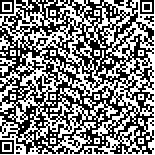| 摘要: |
| 传统城市规划对公共服务配套重视
不足,一定程度上影响了中小城市公共服务
的完善程度,也对生活圈的构建提出了新的
挑战。本文以重庆市潼南区为例,通过研究
中小城市居民生活的行为特征、对公共服务
的需求以及城市服务配套现状,从生活圈尺
度、边界、设施配套等方面提出了中小城市
公共服务规划对策,以期为生活圈时代的中
小城市公共服务规划提供参考,丰富生活圈
研究内容。 |
| 关键词: 生活圈 公共服务规划 中小城市 潼南区 |
| DOI:10.13791/j.cnki.hsfwest.20210109 |
| 分类号: |
| 基金项目: |
|
| Studies on Countermeasures for the Public Service Planning in Small and Medium-SizedCities from the Perspective of Life Circle |
|
DU Xiaojuan,WANG Wenjing,JIN Gang
|
| Abstract: |
| Life circle refers to the organization method of elements in urban area that can meet
the basic material, life and cultural needs of residents within a certain walking time range. It
is usually divided into 5-minute circle, 10-minute circle and 15-minute circle. The advent of
the life circle era has brought new challenges to urban public service planning. At the same
time, the continuous improvements of residents’ living standards also place higher demands on
the quality of public services. The traditional urban planning places little emphasis on public
service, which affects the degree of improvement of public services in small and medium-sized
cities to a certain extent, and also places new challenges to the construction of life circle.
Tongnan is an outer suburban district which locates in the northwest of Chongqing, and
the built-up area of the Tongnan was about 21 square kilometers, with an urban population of
271 600. In 2018, Tongnan achieved a regional GDP of 38.09 billion yuan. From the perspective
of both city scale and economic development level, Tongnan is a typical small and medium-
sized city in southwest China. On basis of the urban strategic planning project of Tongnan, this
study conducted government seminars, field survey, residents’ interviews and questionnaires
survey to investigate the public services life circle in small and medium-sized cities. The result
reveals three major differences between big cities and small & medium-sized cities. Firstly, the
differences are the behavior characteristics. In small and medium-sized cities, residents have
more free time after work, and there are many types of leisure activities such as community
cultural, parent-child entertainment, sports, fitness, party and commercial shopping. Also,
both the usage rate of public service facilities and the proportion of walking travel are higher.
Secondly, it lies in the status of urban service. In small and medium-sized cities, the supply of
public service is government dominated while the market’s supplementary role is relatively weak.
Also, the field survey results show that the community service function of small and medium-
sized cities is not well developed, especially the scale of the community service center failed to
meet the baseline of provincial standard. Thirdly, the public services demand is also different.
Questionnaire survey results reveal that residents in small and medium-sized cities also demand
high-quality medical, educational, cultural, sports and pension facilities. Also, the needs of
different age groups have significant differences. Especially, a painting competition is conducted
between primary school students, who will be the master of the city in the future. And their paintings suggest that their desired future urban life have a green and livable environment, smart technology, and diversified services.
Based on the analysis above, suggestions for public service life circle planning are proposed from the following three aspects. First, the scale
of the community life circle in small and medium-sized cities can be more flexible. It can be refined by combining the size, density and spatial
distribution of the urban population, as well as the actual needs of the residents in different cities. Secondly, according to Tongnan’s experiences,
the public services, especially community services are highly dependent on the government, thus the boundary of basic public service circle should
match with the boundary of local administrative divisions. The boundary of convenience service, on the contrast, should be determined by the
market. Thirdly, it should provide better facilities. On the one hand, government or local authorities in small and medium-sized cities should build
more basic public service facilities to solve the shortage problem. On the other hand, high quality services facilities which are all age friendly should
also be provided. Due to higher aging rate in small and medium sized cities, more attention should be paid to supplementing the facilities for the
elderly and children. In particular, the sudden outbreak of COVID-19 epidemic in early 2020 has put forward new requirements for the community’s
capacity for epidemic and disaster prevention. As a basic spatial governance unit, the community should take full advantage of the construction of
the life circle as an opportunity to provide better, more accurate and high-quality public services in the future.
As a summary, this paper is supposed to provide references for improving the public service planning of small and medium-sized cities in
the life-circle era, and also enrich the research content of the Life Circle. |
| Key words: Life Circle Public Service Planning Small and Medium-Sized City Tongnan District |


